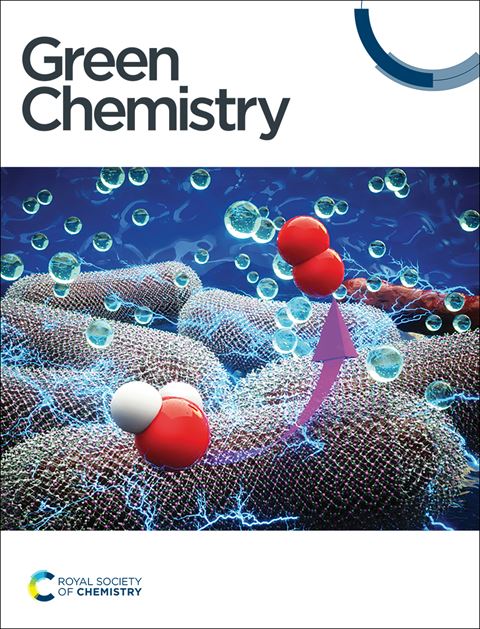Deep eutectic solvent engineering: a novel ternary system for efficient lignocellulose extraction†
IF 9.3
1区 化学
Q1 CHEMISTRY, MULTIDISCIPLINARY
引用次数: 0
Abstract
The effective processing and utilization of lignocellulosic biomass (LCB) are essential for sustainable development. In this work, we present a novel ternary deep eutectic solvent (DES) system comprising glycerol, potassium carbonate (K2CO3), and polyethylene glycol 200 (PEG-200), designed to enhance the deconstruction of LCB through its low viscosity and improved solubility. The system's low viscosity (2.87–26.48 Pa s) ensures excellent fluidity and accessibility, significantly improving mass and heat transfer during reactions. Furthermore, the increased solubility (39.21–54.66% w/w) further boosts lignin dissolution, leading to more efficient separation. Under optimal conditions, the removal rates of hemicellulose and lignin reached 81.93% and 96.37%, respectively, with a cellulose yield of up to 73.65%. Moreover, the cellulose-rich residues resulting from this process exhibit desirable properties such as high crystallinity, excellent thermal stability, and robust processing capabilities, marking them as valuable materials for efficient downstream processing and applications. The development of this ternary DES system represents a greener and more sustainable approach to LCB treatment, offering a transformative solution poised to advance the future of bio-based industries. This innovative system not only improves the efficiency of biomass processing, but also aligns with environmental sustainability goals, supporting the broader adoption of eco-friendly technologies in industrial applications.
求助全文
约1分钟内获得全文
求助全文
来源期刊

Green Chemistry
化学-化学综合
CiteScore
16.10
自引率
7.10%
发文量
677
审稿时长
1.4 months
期刊介绍:
Green Chemistry is a journal that provides a unique forum for the publication of innovative research on the development of alternative green and sustainable technologies. The scope of Green Chemistry is based on the definition proposed by Anastas and Warner (Green Chemistry: Theory and Practice, P T Anastas and J C Warner, Oxford University Press, Oxford, 1998), which defines green chemistry as the utilisation of a set of principles that reduces or eliminates the use or generation of hazardous substances in the design, manufacture and application of chemical products. Green Chemistry aims to reduce the environmental impact of the chemical enterprise by developing a technology base that is inherently non-toxic to living things and the environment. The journal welcomes submissions on all aspects of research relating to this endeavor and publishes original and significant cutting-edge research that is likely to be of wide general appeal. For a work to be published, it must present a significant advance in green chemistry, including a comparison with existing methods and a demonstration of advantages over those methods.
 求助内容:
求助内容: 应助结果提醒方式:
应助结果提醒方式:


